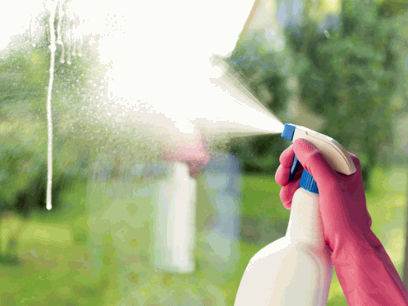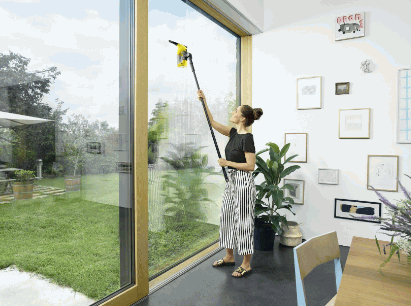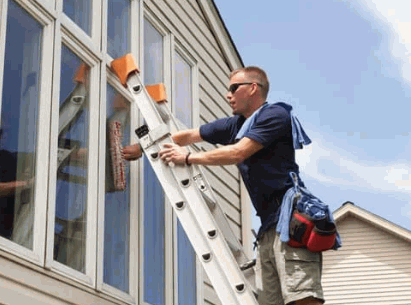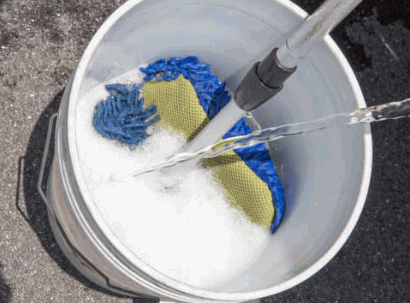Table Of Contents
- 1 Why Is Window Cleaning Important?
- 2 What Are The Different Types Of Window Cleaning Equipment?
- 3 What Are The Factors To Consider When Choosing Window Cleaning Equipment?
- 4 What Are The Safety Precautions When Using Window Cleaning Equipment?
- 5 What Is The Best Window Cleaning Equipment For Different Types Of Windows?
Are you tired of smudges and streaks on your windows, no matter how much you clean them? You're not alone. Many people struggle with finding the right window cleaning equipment to achieve a streak-free shine. But don't worry, in this article, we'll explore the best equipment options to make your window cleaning experience effortless and effective.

Why Is Window Cleaning Important?
Window cleaning is vital for maintaining a clean and inviting environment, increasing natural light intake, and extending the lifespan of windows.

What Are The Different Types Of Window Cleaning Equipment?
When it comes to keeping our windows clean and clear, having the right equipment is essential. In this section, we will discuss the various types of window cleaning equipment that are commonly used. From the classic squeegees and window cleaning solutions to the more specialized tools such as extension poles and scrapers, each piece of equipment serves a unique purpose in achieving spotless windows. So let’s dive in and explore the different types of window cleaning equipment that can help you achieve sparkling results.
1. Squeegees
Squeegees are versatile tools for achieving streak-free windows. Follow these steps for effective use:
- Prepare the window by removing any dust or debris with a soft brush.
- Dip the squeegee in a solution of water and mild detergent, ensuring the entire blade is wet.
- Starting from the top, pull the squeegee down in a straight, overlapping motion, wiping the blade after each stroke.
- Use a microfiber cloth to wipe any remaining water along the edges for a pristine finish.
For optimal results, choose a high-quality squeegee with a durable rubber blade and an ergonomic handle.

2. Window Cleaning Solution
- When selecting a window cleaning solution, opt for one with a neutral pH for general cleaning.
- If you encounter tough stains, consider using a solution with ammonia or vinegar.
- For a more sustainable approach, you may want to consider eco-friendly options.

3. Microfiber Cloths
- Before using, inspect the microfiber cloth for any debris or dirt.
- Dampen the cloth with water or a suitable cleaning solution for the type of windows.
- Gently wipe the windows in a back-and-forth motion using the microfiber cloth to remove dirt and grime.
- To prevent spreading dirt, be sure to regularly rinse or replace the cloth during the cleaning process.
- After use, follow the manufacturer's instructions to wash the microfiber cloth and maintain its effectiveness.

4. Extension Poles
- Before using, inspect the extension pole for any damage.
- Choose the appropriate length to reach the windows without overextending.
- Securely attach the squeegee or scrubber to the extension pole.
- Adjust the extension pole to a comfortable height to avoid strain while cleaning.

5. Ladders
- Inspect the ladder for any damage or defects before using it.
- Place the ladder on a stable, level surface to prevent accidents.
- Ensure that the ladder is tall enough to reach windows without overreaching.
- Use ladder stabilizers or standoff arms for added safety and support.
Pro-tip: It is always a good idea to have someone support the base of the ladder for extra stability and safety.

6. Scrapers
- Select a suitable scraper based on the window's material to avoid scratches.
- Hold the scraper at a low angle against the glass and apply light pressure for effective cleaning.
- Regularly change the blades of the scraper to maintain sharpness and avoid streaks on the windows.
- Choose a scraper with an ergonomic handle for comfortable handling during extended use.

7. Bucket And Sponge
- Fill a bucket with a solution of water and a mild window cleaning detergent.
- Place the sponge in the solution and allow it to soak up the liquid.
- Wring out the excess solution from the sponge.
- Gently scrub the window surface using the bucket and sponge, focusing on any areas with stubborn dirt or grime.
- Rinse the sponge frequently to avoid redistributing dirt.
- After cleaning, use a squeegee or microfiber cloth to remove excess water from the window.

What Are The Factors To Consider When Choosing Window Cleaning Equipment?
When it comes to window cleaning, having the right equipment is crucial for achieving a streak-free, spotless finish. But with so many options available, how do you know which equipment is the best fit for your needs? In this section, we will discuss the key factors to consider when choosing window cleaning equipment. From the type of windows you have to the frequency of use, each factor plays a role in determining the most suitable equipment for your specific situation. So let's dive in and learn about the important considerations to keep in mind before making your purchase.
Uncover more: How To Clean Window Sills
1. Type Of Windows
- Single-hung or double-hung windows: Use squeegees or microfiber cloths for easy access to both sides of the glass.
- Casement or awning windows: Opt for extension poles to reach the top and ensure thorough cleaning.
- Sliding or hopper windows: Utilize scrapers to remove dirt and grime from the tracks and sills.
- Bay or bow windows: Choose extension poles to reach heights and microfiber cloths for gentle cleaning.
2. Height Of Windows
- Assess window height: Measure the distance from the ground to the top of the window to determine the necessary equipment length.
- Choose suitable tools: For tall windows, it is important to invest in extension poles with squeegees or scrubbers to effectively reach and clean them.
- Consider safety: It is crucial to ensure stability and control when using equipment at heights to prevent any accidents or damage.
Pro-tip: When cleaning tall windows, always make sure to properly secure the ladder and have a spotter for added safety.
3. Frequency Of Use
- Evaluate the frequency of use based on the window cleaning requirements - daily, weekly, monthly, or seasonal.
- Consider the environmental factors affecting the frequency of window cleaning, such as the presence of dust, pollution, or inclement weather conditions.
- Assess the building's location and surroundings to determine the impact on the frequency of window cleaning requirements.
It's crucial to evaluate the frequency of use to select the most suitable window cleaning equipment for efficient and effective maintenance.
4. Budget
- Determine the available budget for purchasing window cleaning equipment.
- Research different types of equipment that fall within the given budget range.
- Consider the long-term cost-effectiveness of each piece of equipment.
- Look for combo deals or discounts to make the most of the budget.
- Compare prices from multiple suppliers to ensure the best value for money.
What Are The Safety Precautions When Using Window Cleaning Equipment?
When it comes to cleaning windows, having the right equipment is essential. However, it is equally important to prioritize safety while using these tools. In this section, we will discuss the top safety precautions to keep in mind when using window cleaning equipment. From proper ladder techniques to appropriate protective gear and checking weather conditions, we will cover all the necessary measures to ensure a safe and successful window cleaning experience. You won't want to miss this valuable information before your next window-cleaning task.
1. Use Proper Ladder Safety Techniques
- Before use, inspect the ladder for any damage.
- Place the ladder on a stable and even surface.
- Make sure the ladder is the appropriate height for the task.
- When climbing up or down the ladder, face towards it and maintain three points of contact.
- Avoid overreaching while on the ladder.
- Do not exceed the weight limit of the ladder.
2. Wear Appropriate Protective Gear
- Wear safety goggles to protect your eyes from cleaning solutions or debris.
- Use non-slip, closed-toe shoes to prevent slipping and protect your feet from falling objects.
- Wear gloves to shield your hands from harsh chemicals and sharp edges.
- Use a harness if working at heights to prevent falls and ensure safety.
Always prioritize safety by wearing the necessary protective gear to prevent accidents and injuries.
3. Check The Weather Conditions
- Make sure to check the weather forecast for a dry, overcast day with low wind levels before cleaning windows.
- Avoid cleaning windows during extreme temperatures, as this can affect the effectiveness of cleaning solutions.
- Consider the season - for example, winter conditions may lead to the freezing of water on the windows, making it difficult to clean them.
- Assess the humidity levels, as high humidity can cause cleaning solutions to dry too quickly, leaving streaks on the windows.
When checking the weather conditions, always prioritize safety and the effectiveness of the cleaning process. It's crucial to choose the right weather conditions to ensure optimal results and safety.
4. Have A Spotter Or Partner
- Collaborate with another person to hold the ladder and maintain its stability.
- Effectively communicate to coordinate movements and actions.
- Help pass tools and equipment as necessary.
- Be vigilant for any potential hazards or obstacles.
- Offer support and aid in case of emergencies or accidents.
What Is The Best Window Cleaning Equipment For Different Types Of Windows?
When it comes to cleaning windows, having the right equipment can make all the difference. Different types of windows require different tools to achieve a streak-free and sparkling finish. In this section, we will discuss the best window-cleaning equipment for various types of windows. From large windows to hard-to-reach ones, we'll cover the most effective tools and techniques to keep your windows looking crystal clear.
1. For Large Windows
For large windows, follow these steps:
- Start by preparing your cleaning solution and filling a bucket with it.
- Attach the cleaning solution to an extension pole to reach the top part of the windows.
- Use a squeegee to clean the windows, starting from the top and working your way down in a reverse S pattern.
- Finish by wiping the edges and corners with a microfiber cloth for a streak-free finish.
Pro-tip: Work on cloudy days to prevent the cleaning solution from drying too quickly, causing streaks.
2. For Small Windows
- Choose a small squeegee to effectively clean small windows without leaving streaks.
- Opt for a gentle window cleaning solution to avoid damaging the glass or frames.
- Use a microfiber cloth for drying and polishing small windows, ensuring a spotless finish.
- Consider using an extension pole for slightly out-of-reach small windows, enhancing accessibility and safety.
Pro-tip: When cleaning small windows, always start from the top to prevent drips and streaks on the already cleaned areas.
3. For Hard-To-Reach Windows
- Assess the accessibility of the window and determine the safest approach for cleaning, especially for hard-to-reach windows.
- Invest in a sturdy extension pole with a secure attachment to easily reach high windows.
- Consider using a telescopic ladder for windows located in challenging spots.
- Opt for specialized window cleaning tools, such as a pivoting squeegee for angled windows.
- Ensure proper safety measures are in place, such as using safety harnesses and securing ladders, when cleaning difficult windows.
4. For Specialty Windows
- For stained glass windows, use a gentle cleaning solution to protect the delicate glass and intricate designs.
- For tilt-in windows, invest in a squeegee with an adjustable handle to reach all angles without straining.


